All About Labrador Retrievers

The Labrador Retriever is a dog with the most versatile performance characteristics. The breed has become one of the most popular among our compatriots in recent decades. This is not surprising, because Labradors are truly versatile: they are used in search and rescue operations, they serve as good guides, and are irreplaceable in the work of police, customs services and drug control structures. And in the house, these dogs will become good companions for walking and playing with their big and small owners.
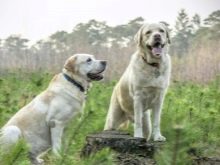
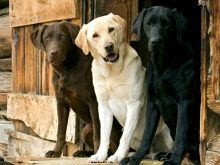

Brief description of the breed
Origin story
Despite the fact that there are strong associations between the name of the dog breed and the famous North American Peninsula, the researchers have not found any relationship between them. The first mention of this dog appeared on the island of Newfoundland. The origin of the breed is explained by a variety of theories.According to one of them, the first to appear were black-colored dogs - the color of their fur resembled deposits of a rock of igneous origin - labradorite, which is widespread in those parts. According to another theory, the name of the animals was given by Europeans, who were not particularly versed in the toponymy of the New World, therefore they gave the name to the dogs on the grounds that these animals arrived in European countries on ships sailing from the shores of the Labrador Sea. There is a third opinion - some data indicate that both of these breeds arose at about the same time, but due to the annoying confusion, the dogs from Newfoundland were called by the name of the neighboring island - Labrador, and vice versa.
It is believed that the distant ancestors of Labrador retrievers were the water dogs of St. John. Unfortunately, it is no longer possible to study their history over the years, but cynologists believe that such a variety was the result of numerous interspecific crossbreeding of dogs of various breeds that appeared on the American coast since the era of the Great Geographical Discoveries.
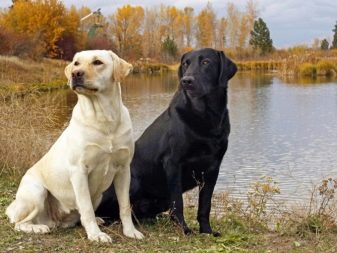
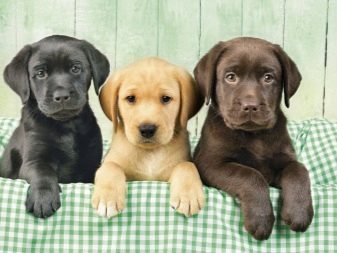
The first explorers to set foot on the shores of Canada were sailors from Portugal. Most likely, thanks to their efforts, the can-di agua appeared here - water dogs, bred in the Middle Ages to help navigators. They often performed the role of postmen between ships of the same flotilla, delivered letters to land, helped to pull things out by chance, and even participated in the corral of cod in placed fishing nets. These dogs felt great in the water even at great depths, so the Canadians often resorted to their help when searching for drowned people. Unfortunately, a whole galaxy of prohibitive laws that established increased taxes for dog breeders led to a significant reduction in the number of these animals, and subsequently to their complete disappearance.
The most recent representatives of the water dog died in the 20th century, but the breed did not end there - its genes are alive in Labradors, as well as golden and straight-haired retrievers.
The Labradors came to the European continent from merchant ships. For quite a long time, there were strong economic ties between England and Newfoundland - on the shores of Britain, Canadian fishermen sold the cod they caught. Known for their love of hunting, the British immediately turned their attention to nimble dogs, easily amenable to training. - this is how the import of "small Newfoundland" dogs began in the 19th century. The designation of the breed, adopted at the present time, appeared only in 1870, at about the same period the source of the "influx of fresh blood" gradually began to dry out, and a few years later, in 1895, a quarantine act was adopted in the country, according to which the import of animals without a six-month quarantine the country was banned. Since then, dog breeding has become possible exclusively through internal selection.
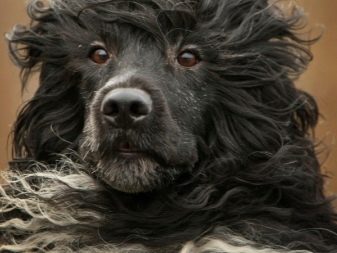
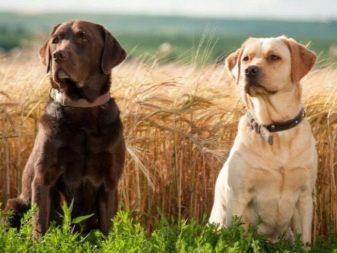
The very first breeders were representatives of the two largest families - the Duke of Bucklew and the Earl of Malmesbury, it was thanks to their efforts that the breed became popular among the English aristocrats. In addition, it turned out that the short-haired dogs from the island of Newfoundland have become ideal companions when hunting small game. They were distinguished by a meek disposition combined with endurance, they had the ability to quickly find and import shot game and other prey. The great success of the large dogs was due to their exceptional show qualities.
For several decades, complete confusion lasted with the attribution of dogs to one or another species. Often there were situations when puppies from the same litter were attributed to different branches of retrievers, but in 1903 the breed was officially recognized, at the same time a club of dog breeders was created and several kennels were organized, a Club of Labrador Retriever Breeders appeared - this organization is still operating today. tirelessly caring for the preservation of breed characteristics and clean lines.
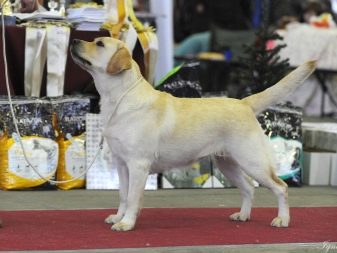

During World War I, these dogs sailed across the ocean again. They quickly became popular in the United States. Gradually, the American type of breed appeared, the disputes about the belonging of which do not subside to this day.
For many years, the only acceptable color for these animals was considered black, puppies of other colors were culled. In 1899, the situation changed - the very first fawn Labrador retriever was officially registered, and in 1930 - a chocolate one.
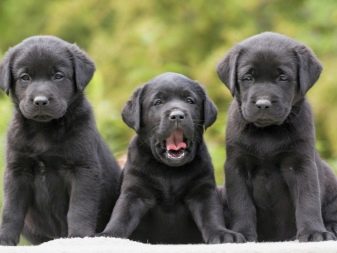
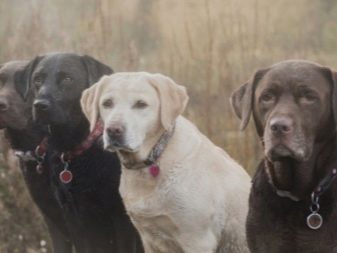
Description
Labrador Retrievers are very active and nimble dogs of strong constitution.
When determining the breed purity, experienced breeders in all countries are guided by the accepted standard of the International Cynological Association. In 2011, its newest edition was approved.
The head is not very massive. The transition from the head towards the muzzle is quite distinct. Nose with large nostrils. The size of both jaws is medium, the canines grow strictly vertically, the grip is strong. The upper incisors completely overlap the lower ones.
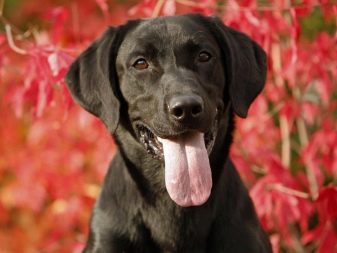
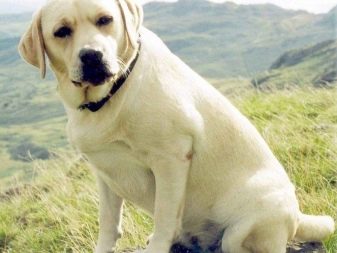
The eyes are small, but not small, the iris is hazel or brown. Their expression is very intelligent, reflecting the nature of the pet.
The ears are medium, hanging type, tilted back, at the same time, close to the head.
The neck is strong and muscular, the transition lines are soft.
The top line of the body is horizontal. The loin is shortened, moreover, it is broad and muscular. The sternum area is powerful.

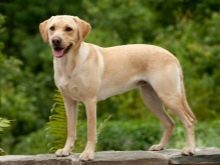
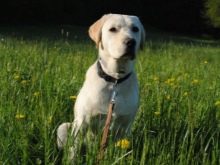
The forelegs are straight from the elbow to the ground, the bones are strong, the shoulder region is long, slightly sloping. The shoulder blades are compact, elongated, thanks to this, a wide step of 90-150 degrees is provided, the paws are rounded, the pads are well developed.
The hind legs are strong and powerful, with no signs of inclination of the croup towards the tail. The knees are angled at 110 degrees, which provides an optimal structure for proper movement of the rear. The hocks are quite low. The structure of the hind legs corresponds to the front ones.
Labrador retrievers have a rather strong tail near the base, smooth-haired, towards the end it becomes narrower. This form is called the reverse "otter". The size is medium, usually kept low, bending into a ring is not typical for dogs of this breed.

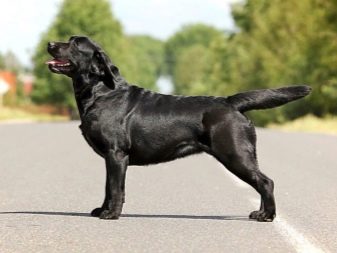
The structure of the limbs makes the movements of the dogs relatively free, the front and hind legs move in a straight line, parallel to each other.
Retrievers have very thick, but short hair, rather coarse, while the undercoat is thick, thanks to which the dog is protected from frost in winter. Its color, as a rule, is monochromatic, most often black, fawn or brown. Fawn is allowed in a variety of tones from pale beige to reddish-brown, brown is presented in two colors - chocolate and liver. A small whitish spot in the sternum area is allowed.
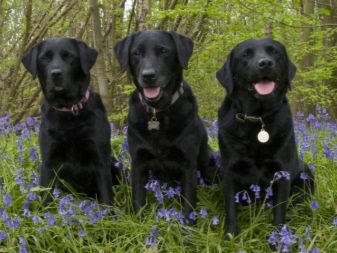
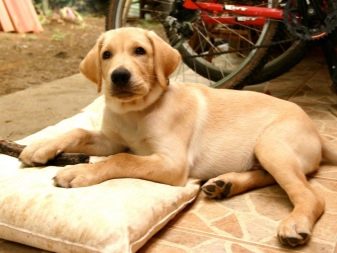
In accordance with the standards, the growth of males at the withers corresponds to 56-57 cm, bitches - 54-55 cm. Not so long ago, Labradors with a height of only 50 cm began to appear in European countries, and this trend causes concern among cynologists. Body weight is not regulated by standards, but usually the weight of males varies from 29 to 36 kg, and females - from 25 to 32 kg.
It should be borne in mind that Labrador Retrievers differ among themselves not only in the existing official typology (for example, American and English, classic and modern), but also depending on the class of the animal. For example, show dogs, which are bred for competitions and exhibitions, are usually heavier than workers, but the latter are more athletic and their legs are slightly longer.

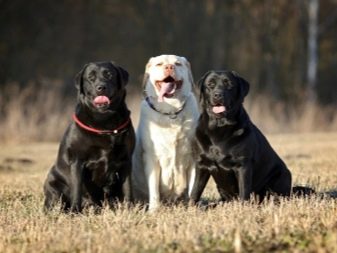
Advantages and disadvantages
To the main advantages breeds include:
- mental balance;
- friendly character;
- devotion to one's master and members of his family;
- unpretentiousness in care and maintenance;
- the ability to easily get along with other pets;
- the ability to use dogs as a guide;
- high intelligence;
- good learning ability;
- developed hunting instincts;
- strong immunity (subject to successful heredity).
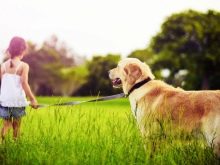

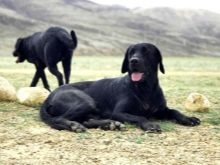
Labrador retrievers also have disadvantages. These animals are quite capable of chewing on children's toys and personal belongings of their owner, and in addition, they require walks at any time of the year, regardless of the weather. If an animal has poor genetics, then it is prone to some hereditary pathologies, including oncology. Most of all, Labrador owners are scared off by the fact that they shed very much and, moreover, have a rather unpleasant pungent odor.

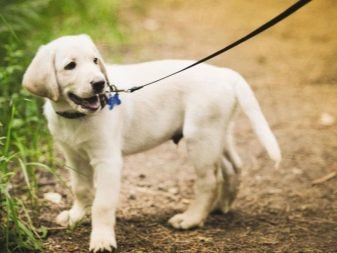
There is an opinion that Labrador retrievers are animals with a short lifespan. This is not so, retrievers are healthy animals, and if diseases happen to them, then in most cases they are hereditary, and they can develop not only in adult dogs, but also in puppies. These problems include:
- dysplasia of the hip joint - a disease of cartilage tissue, which is expressed by lameness and persistent painful sensations in a dog;
- arthrosis of the knee joint - is a complete or partial destruction of the articular cartilage in the knee; most often in the early stages it is invisible, therefore it is diagnosed already in an advanced course;
- retinal atrophy - eye pathology, which in most cases leads to blindness;
- epilepsy is a neurological pathology, most often hereditary, but in some cases it can develop with unfavorable life factors;
- dermatitis is an autoimmune disease in which the immune system begins to mistakenly attack the skin of an animal.
There are cases of severe allergies in Labradors, usually food, but sometimes the animal's body reacts to one or another irritant in the environment.
Representatives of this breed of dogs have a pronounced predisposition to cancer.
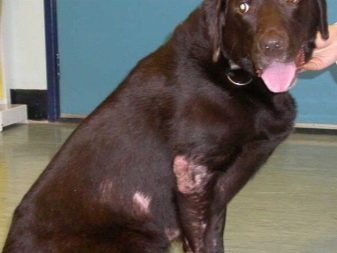
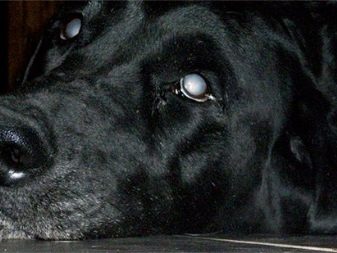
Character traits
If we talk about the nature of retrievers, then they are distinguished by reliability, loyalty, intelligence and activity. It is quite difficult to find a dog with a softer and more accommodating character than a Labrador. These animals are extremely friendly and try to please people in every situation. For them, manifestations of aggression are unusual, so there are absolutely no difficulties in a house where there are already other pets.
These animals treat children well, their reputation in this matter is truly impeccable, and it concerns all children, without exception. Labradors are great nannies, they do not divide babies into friends and foes. With the master's children, they are "inseparable" - these are the best companions for games. Away from the children, they get bored, and when they are around, they are ready to play with them all day long.
Parents can safely leave their child in the care of this great nanny without any fear.
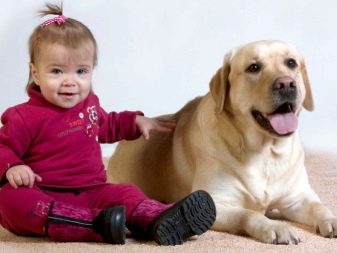
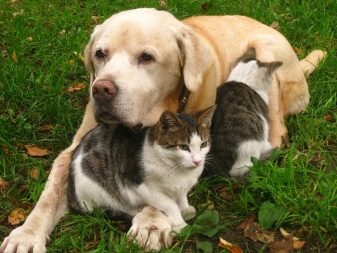
Labradors have a very positive attitude towards strangers. On the one hand, this is a plus, since few people like to come to visit and be out of favor with a big dog. But at the same time, this is also a drawback - there is probably no other breed that would be so sincerely happy with strangers - this makes it impossible to use the animal as a watchman.
Labradors are not suitable for guards either. Love for people in them is so great that dogs do not even have the idea that a stranger can hurt them or their owners. The maximum that the owner of the dog can count on is a slight warning barking, but almost immediately it turns into affectionate whimpering and attempts to kiss the stranger.

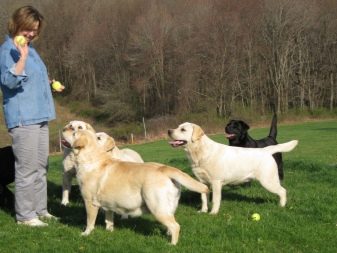
These are incredibly playful animals, especially in childhood, so it should be noted that these dogs grow up very late, in their hearts they retain all the puppy habits up to 3 years old and behave accordingly. Many Labrador breeders even call them "40 kilograms of uncontrollable joy", as they try to throw out all their positive energy at every convenient and inconvenient occasion.
The Labrador Retriever is considered an ideal guide for people with disabilities, in particular for the visually impaired, and dogs have significant therapeutic abilities for people with autism. These animals are often used as service animals in search and rescue operations., including on the water. Labradors have a good sense of smell, so they often help intelligence officers in the search for drugs and explosives.

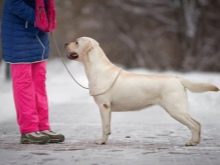

The memory of generations makes the animal excellent gun dogs - they know how to quickly find shot animals and bring them to hunters. However, if you are not fond of shooting, then you can replace it with active games with your pet - it will be enough for you to regularly load balls and sticks away. This is the perfect workout for Labradors, which will not only keep them entertained, but also rid them of those extra calories.
By nature, Labradors are attentive and obedient, they are ready to learn and obey the owner in any situation, therefore, the training of dogs of this breed can be practiced even at home without resorting to the services of experienced dog handlers. The first thing that the dog must understand for himself is his nickname. Before the end of the vaccination quarantine and, accordingly, before the first exit to the street, the pet must also learn the command "to me", with the help of which the owner calls the dog.
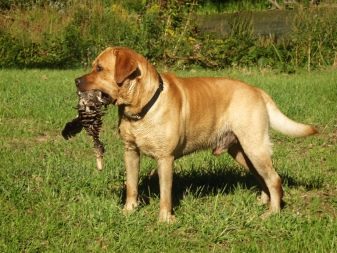
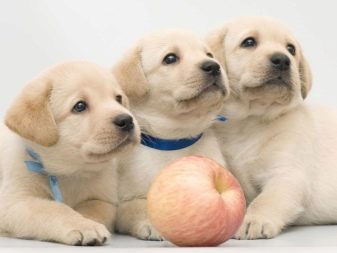
From the very first days of life, the permanent owners of the puppy should understand the prohibition commands "no" and "fu". The kid should clearly understand when the owner is unhappy, and associate this with the demand to immediately stop what he is doing.
Professionals point out that the main mistake of breeders is to think that their dog is intelligent and quick-witted. Of course, Labradors are endowed with intelligence, but when it comes to training, then you should not endow dogs with human qualities. The fact is that dogs of this breed are able to distinguish intonations, but it is important to keep in mind that even the same root words always sound different for them. Therefore, before starting upbringing, you need to choose one and only option for the command and never bend it, not substitute other synonymous words. Try to consistently and systematically teach your pet one command through multiple repetitions throughout the day, and only after the animal has learned it, you can proceed to the next.
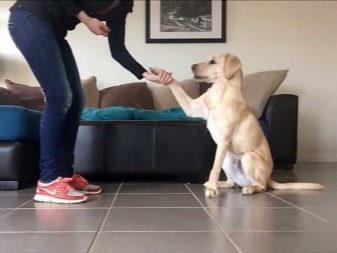
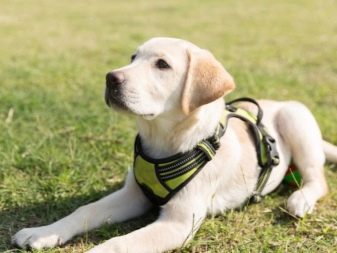
The very first lessons on the street are best done in a deserted place where no one can distract the young Labrador. It will be better if the training takes place in the form of a game, then the dog will remember all the basic requirements much faster.
After the baby gets comfortable on the street, you need to start socializing him. To do this, he should be taken to places of general walking of dogs. A Labrador must develop an adequate response to strangers and strangers.


Some owners of Labrador Retrievers do not go deep into the education and training of their dogs, because they believe that natural dedication, the desire to please the owner and his family members, as well as the absence of aggression, already makes dogs adapted to life among people. In this case, they are limited to the development of basic behavioral skills in public places. Others, on the contrary, make every effort to get a well-bred dog - then it is worth contacting professional trainers. It will not be superfluous to take a training course together with your four-legged pet.
It is important to set boundaries for your dog once and for all. If the puppy is forbidden to enter any room in the house, for example, into the bedroom, then this only means that access to it should always be closed, regardless of your mood and behavior of the dog.
The innate intelligence of Labrador Retrievers allows them to very quickly calculate the "weak points" of the owners and skillfully use this knowledge.


Views
The vast majority of dog handlers agree that Labradors themselves are a kind of retriever, which, in addition to them, includes several more breeds.
- Golden retriever - This animal has many external similarities with the Labrador, but its coat is slightly longer, and its temperament is calmer and more balanced.

- Flatcoated retriever - an extremely intelligent and friendly dog, but it is distinguished by suspiciousness and extreme emotionality.
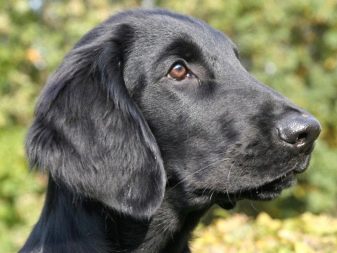

- Chesapeake bay retriever - this dog is often called a kind of special forces in the family. The animal was bred specifically for work in the military and rescue departments for use in the most difficult natural and climatic conditions. This species, in comparison with its closest relatives, has greater endurance and a rather harsh disposition.
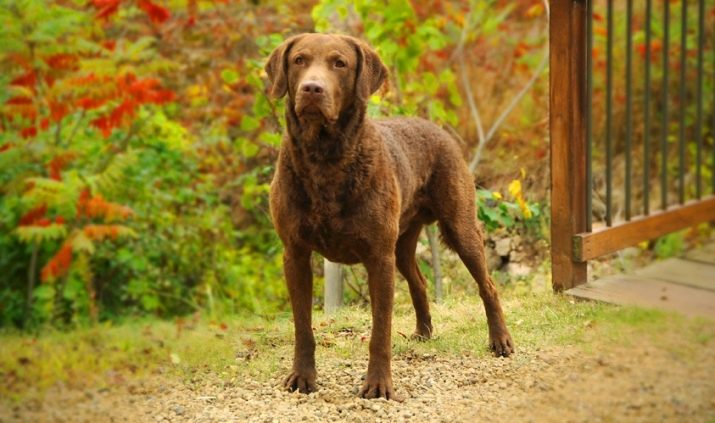
- Curly-haired - another long-haired retriever in service, but mainly as a guard. Of all the numerous family of retrievers, only this dog has the potential of a watchman and guard.
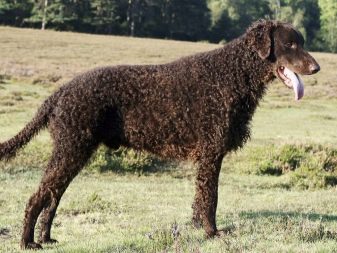
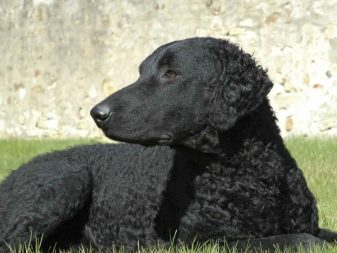
- Nova Scotia - can also be used as a guard dog, but to a lesser extent than its brothers. This breed is more difficult to train. In our country and in neighboring states of the former CIS, it is not widespread.

The Labradors themselves are not subdivided into individual varieties within the breed, but since the existing suits were not recognized as cynological lines immediately, but gradually, today a color definition is often added to the name of the breed. This designation is used to indicate a specific subspecies of the animal.
How to choose a puppy?
Given the hereditary tendency of Labrador Retrievers to many diseases, it is necessary to be as responsible as possible when choosing a puppy. First of all, it should have a fluffy, soft and silky coat with a pleasant smell. Discharge from the eyes and ear canals is not allowed. A good indicator of health will be the activity of a young Labrador - if the pet is cheerful, playful and restless, then it has good health. If you are offered a lethargic and atypical dog, feel free to refuse such an acquisition.
See how the dog reacts to you. Normally, a puppy should not show any signs of fear or shyness when meeting a new person. If you are offered the smallest puppy of the entire litter, this is also a reason to refuse, most likely the animal is inferior.

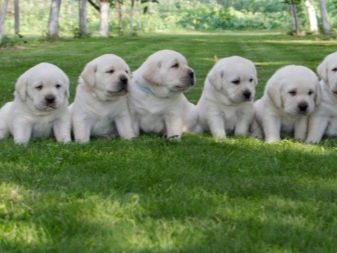
Usually the puppy is taken from the mother at the age of 2-3 months. It is not worth buying a newborn Labrador retriever, as in this case he has not yet received the necessary maternal nutrition. If you take the animal at an older age, it is possible that the puppy did not socialize, but spent all these months in the aviary, then, most likely, the pet will grow up aggressive or, on the contrary, too nervous and timid.
The animal offered to you must have all the necessary documents that confirm its origin, a veterinary passport and a stamp (it is made in the groin area or on the ear).
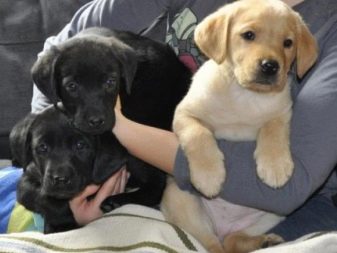

The final mass of Labradors is gaining closer to 12 months, and the exterior is formed only by two years, so you cannot judge the potential show qualities of the dog at 5 or even 6 months. If you intend to participate in exhibitions and pursue the career of your four-legged friend, it is best to hire a competent specialist who will give you the necessary recommendations when buying a dog.
Usually males are bought for shows. They look much more impressive and larger. If your goal is to breed retrievers, then it is better to give preference to females. Female Labradors are unlikely to shine at shows, but they will be able to pass on their good heredity to future retriever litters.

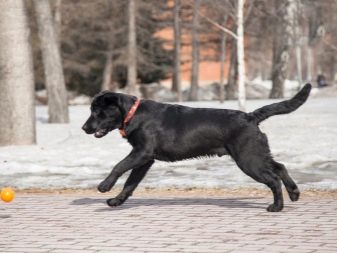
Since most of the health difficulties in Labradors are hereditary, the most important criterion when buying a dog is the health of the parents. Retrievers should be purchased exclusively from nurseries specializing in Labradors, always with a good reputation. There are not so many certified breeders in our country, but most of them can provide a pedigree and a veterinary passport for their animals. Even at the stage of absentee selection, make sure that the photos of the puppy correspond to reality - often unscrupulous sellers put up images of the strongest and healthiest puppy in the ad, and offer another. It will not be superfluous to ask for an additional photo, for example, in an ordinary setting, in the circle of your brothers and sisters, and even better a video.
If the seller is serious, then he will certainly agree to your requirements and give all the necessary information. If the breeder starts to shy away, most likely he has something to hide - do not mess with such a person.


Content rules
Before you get a Labrador Retriever, you should create a comfortable environment for it. Be sure to get a collar, leash and harness, overalls for winter walking. In addition, you immediately need to buy all the necessary accessories for grooming - a furminator, as well as a comb and a claw cutter - it will come in handy if the dog walks exclusively on soft ground.
You need to prepare a corner for your pet. First you need to hide all the wires by placing them in special boxes. Do not forget to also hide all charging from gadgets and plugs-sockets from household appliances, otherwise your pet will gnaw them in the shortest possible time.
Be sure to remove the carpets, at least for the period until your pet has become accustomed to satisfying all of its needs for the toilet or for the walk. If the floor in the apartment is too slippery, you can cover it with diapers or old blankets.
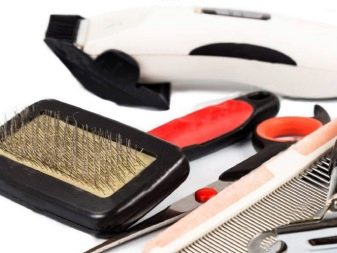
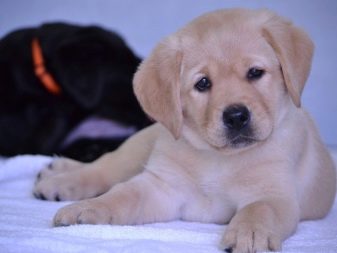
Be sure to set up a personal space zone - the place where the pet will lie should be secluded. You should not arrange a couch where households constantly walk, next to a working TV, where there is a constant draft or heating appliances are located.
Prepare all the necessary utensils - feeders and drinkers. Considering that the dog has a very strong sternum, you will not be in the way of the height-adjustable racks. Bowls can be plastic or metal. Install latches and locks on doors in areas that will not be allowed for your pet.

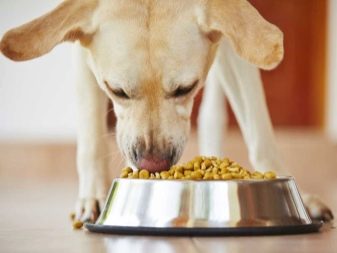
In a private house, additional preparation measures for keeping an animal will be required. It is very important to prevent escape - for this you need to fence off the enclosure with a net and make sure that there is only one way out of it, that the fence material is strong and the dog has no loopholes that would allow it to leave its corner without permission.
If the animal is to be kept in a booth, then it must be spacious, insulated, with a waterproof roof. It is better to install the feeders under a canopy on the deck.
Keep in mind that it is better to use metal or ceramic bowls, as plastic on the street deteriorates quite quickly.
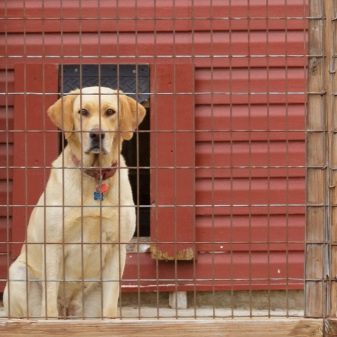
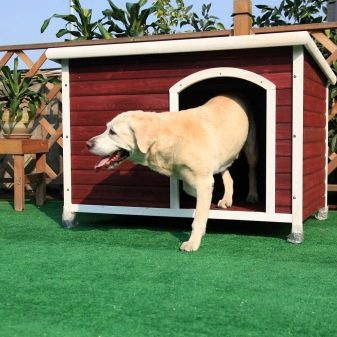
Try to arrange for your toddler to have a fun activity that will allow him to frolic while you are away. If possible, then organize a small artificial pond - Labradors love water procedures and will not hesitate to swim in the hot season.
Both types of retriever containment have their own subtleties. So, in an apartment it will be easy to fulfill the animal's need for socialization and constant contact with the owner and his family members. At the same time, do not forget that Labradors are rather large animals, therefore, with all, even a very strong desire, it will be too cramped for him in a small apartment. In a fenced enclosure, your four-legged friend will receive much less communication than he wants, in addition, the retriever's coat is designed to protect from moisture, but not from the cold, so in any case, in winter, the dog will need to be moved to a heated room.
Depending on where you plan to settle your pet, in any case, he needs physical activity, long and regular. It cannot be provided in the proper volume in an aviary or with a short walk in a quarter of an hour.
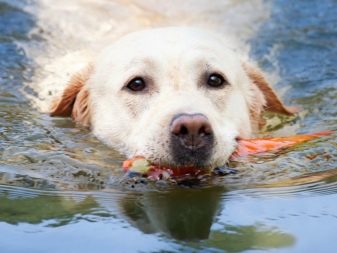
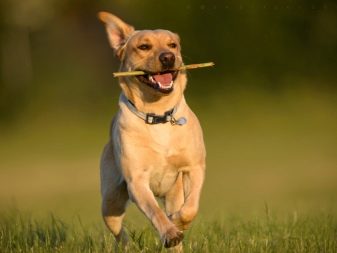
The Labrador Retriever is quite unpretentious to care for, so no special skills are required to keep this animal. His eyes need to be wiped once a week with a weak solution of furacilin or chamomile infusion. From time to time, the ears are treated with a cotton swab dipped in boric alcohol or veterinary lotion.
Retriever's claws usually grind off on their own when walking on a hard surface, but if the dog spends a lot of time in an area with a grassy lawn or you walk mainly in a forest park strip, then you will have to cut the claws from time to time with a special pruner.
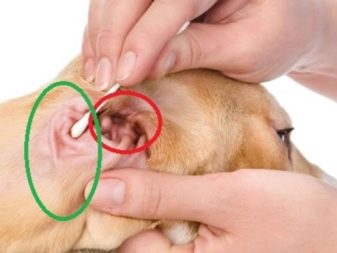
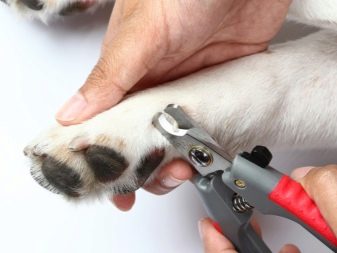
Particular attention should be paid to the condition of the pet's teeth. From early childhood, the puppy should be taught to clean them at least once a week. If you feed your dog dry food, then you can do this procedure less often - the granules help to remove tartar. When feeding "natural" in the diet should include special tooth sticks, cartilage and bones, which also remove plaque.
Care of the pet's coat requires a little more attention. It is not the guard hair that needs to be treated very carefully, but the undercoat, which is usually thick, rather dense and waterproof. These properties create an environment favorable for the reproduction of parasites, which is why these dogs are more likely than others to suffer from fleas.
It is very important to periodically carry out preventive treatment of the dog, combing it out with a furminator brush at least twice a week. If you do not pay enough attention to this procedure, then the faded hairs will begin to irritate the skin of the dog and ultimately lead to the development of dermatitis.
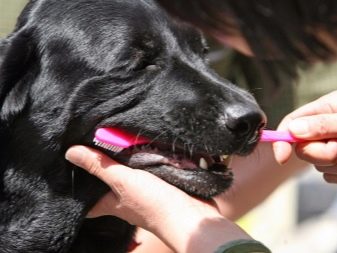
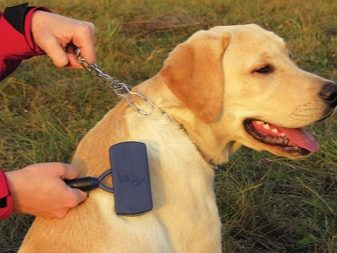
You need to wash your dog 3-4 times a year or as needed, while it is better to use specialized shampoos designed for dogs of thick-haired breeds.
In the spring and summer, it is possible that the animal will be affected by ticks, so after each walk, be sure to inspect your pet. In addition, once a quarter, as well as before mating, dogs are dewormed.
At 2-3 months, Labradors are given the first vaccinations, then they are vaccinated at 6 months and a year.
A feature of the breed is the characteristic smell of an adult dog. Unfortunately, you cannot get rid of this aroma, even if you often bathe your pet with scented shampoos. In such a case, special food, which is sold in veterinary pharmacies, can help.
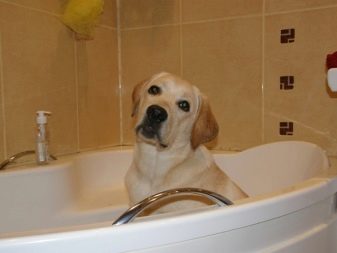
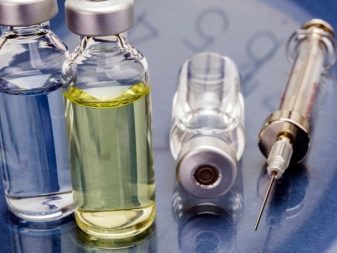
Feeding
The Labrador is an active dog, which, due to its genetics, is designed for vigorous activity and existence in difficult natural conditions. But the realities of living in city apartments create a significant imbalance between calories received and energy lost. All this becomes a common cause of obesity, problems with the heart and blood vessels, as well as joints. In order for the dog to stay healthy as long as possible, he needs a balanced diet. It is best to give preference to ready-made feeds - they contain all the necessary nutrients in optimal dosages.
Just keep in mind that you need to choose premium and super-premium food. If you have certain health problems, you can opt for lines for sensitive animals or hypoallergenic formulations.

If you are a supporter of natural dog food, keep in mind that at least 70% of the diet should be lean meat - veal, beef, lamb or chicken. A couple of times a week, it is allowed to replace one feeding with offal - liver or heart.
The remaining 30% is accounted for by cereals and vegetables. It will not be superfluous to add chopped greens or sprouted cereals to the mash.
Once a week, it is allowed to include low-fat cottage cheese or kefir, as well as eggs in the menu.

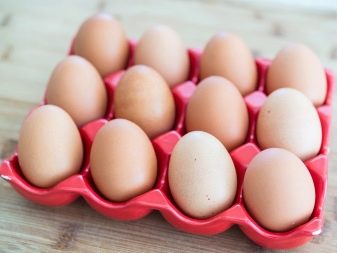
Breeding
In order for the pair for knitting to be matched correctly, should be guided by the following principles.
- Both animals must match each other in the return category.
- The male and female must have a similar conformation.
- Both dogs must be healthy - their physical and mental condition should not be in the slightest doubt.
- The physical form of the producers must be satisfactory. Overweight or, conversely, underweight is not allowed.
- When choosing the optimal pair, you should determine in advance all the advantages and disadvantages of each animal.
- Pet pedigree must be compatible.
- It is very important that the animals have similar weight and body mass parameters. Too much difference in these parameters of both parents often becomes the cause of offspring dysplasia.

Usually the first estrus occurs in Labrador bitches about a year, but at this age it is not recommended to let them get pregnant, since gestation and childbirth will only wear down the dog and harm its health and the offspring will turn out to be weak and sick. It is optimal to plan mating for the third estrus, which takes about 1.5 years.
Keep in mind that animals from a cross-breeding bitch do not take part in the work of the kennel, even if all their breed characteristics fully comply with the standards of a Labrador Retriever.
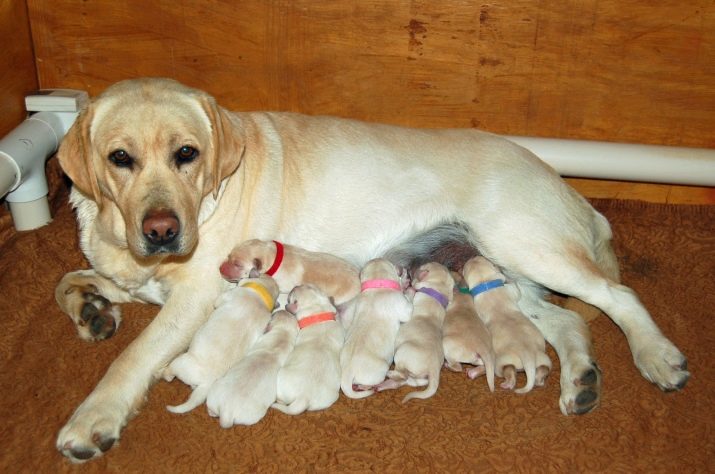
Prices for Labradors are quite high - even the cheapest handheld options cost no less than 15 thousand rubles. However, such pets do not have a veterinary passport and pedigree, therefore there is a great risk that the animal has poor health.
A dog with all the necessary papers, but some defective signs, can make a wonderful pet, but will not be able to participate in exhibitions and competitions, and it is unlikely to be used as breeding material. The cost of such dogs is approximately 25-35 thousand rubles.
Show-class dogs, whose parents are recognized champions who meet all the official breed standards, will cost their owners 40-60 thousand. In this case, your dog will not only be an active participant in exhibitions and competitions, but will also be able to be used for breeding.
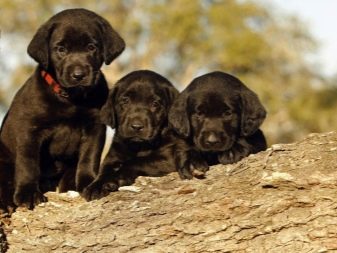
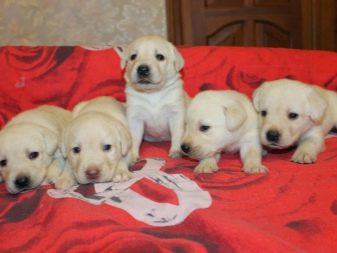
Owner reviews
The Labrador Retriever is not suitable for every family. The owners of a private house with a large plot will become ideal hosts for the animal. Fresh air, spaciousness and the ability to warm up at any time - this is a real paradise for a retriever, so the animal will run around the site all day. Keep this in mind if your house area is planted with flowers, vegetables and young fruit trees.
If the lifestyle of the owners is sports, frequent jogging, bicycling, hiking and water recreation, then nothing else is necessary for your Labrador to be happy. These animals will always find a common language with older children. If they love and appreciate sports games, animals will happily run with them in a race and carry out all their commands.
Labradors are also suitable for retirees, but only with relatively good health. Pensioners do not go to work - Labradors need constant contact with a person, pensioners often walk - Labradors also appreciate walking on the street. They will be especially good companions for people of mature age who are involved in Nordic walking, fishing and swimming.
However, animals must definitely undergo a training course so that older people can easily handle them.
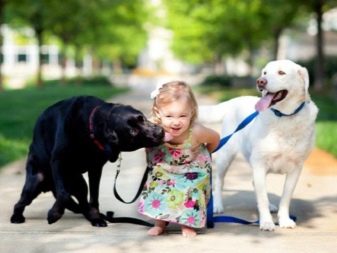
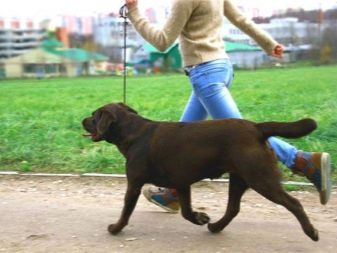
But the breed is not for everyone. So, it is better to pay attention to other animals to the following categories of owners.
- For passionate gardeners - these people spend whole days working on the beds and growing crops. The Labrador on such a site will have to be kept on a leash, since the dog will not be able to appreciate the efforts of its owners and will rush around the site, sweeping away and breaking all landings that fall under its paws. If you are from this category, it is better to get yourself a neat lapdog.
- Too busy people - like many other dogs, Labrador Retrievers are sincerely attached to their owner and require constant contact. If a dog is alone all day, it can become apathetic, sick, or simply go crazy. From a feeling of loneliness, the dog begins to look for things that smell the owner, and communicate with them. If you can't give your pet enough attention, be mentally prepared for the dog to chew on your boots. Careerists and workaholics should pay attention to Greyhounds, Dachshunds or French Bulldogs.
- Families with very young crumbs - of course, a Labrador will never offend a child on purpose, but in a fit of playfulness, a dog of such a large size may not quite calculate its strength and injure the little one. In addition, overly noisy children can annoy the Labrador, so it is better for young parents to opt for intelligent and well-bred Cocker Spaniels.
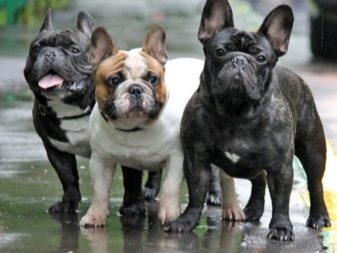
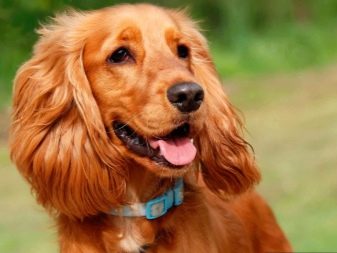
For more on the characteristics of the breed, see the next video.







































I have a black labrador, his name is Gavgavik, he cannot dive.